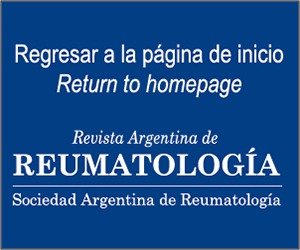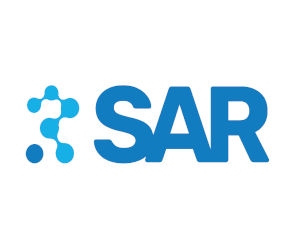Revisión: ¿Qué hacer con un test positivo para anticuerpos antinucleares en Pediatría?
Resumen
La presencia de anticuerpos antinucleares (ANA) es el denominador común de muchas enfermedades autoinmunes sistémicas. Su presencia puede ser indicativa de una enfermedad reumática; sin embargo, estos autoanticuerpos también pueden estar presentes en individuos sanos o con infecciones. El objetivo del presente trabajo es presentar un paciente con dolor musculoesquelético y ANA positivos. En ausencia de una sintomatología que haga sospechar una enfermedad reumática, la positividad de los ANA no tiene significado diagnóstico.Citas
I. Cassidy and Petty, Textbook of Pediatric Rheumatology. 6th edition, Saunders Elsevier, Philadelphia, 2010; 1-5.
II. Cabral DA, Petty R, Fung M, Malleson PN. Persistent antinuclear antibodies in children without identifiable inflammatory rheumatic or autoimmune disease. Pediatrics 1992; 89:441.
III. Deane PMG, Liard G, Siegel DM, Baum J. The outcome of children referred to a pediatric rheumatology clinic with a positive antinuclear antibody test but without an autoimmune disease. Pediatrics 1995; 95:892.
IV. Tan EM, Feltkamp TE, Smolen JS, Butcher B, et al. Range of antinuclear antibodies in “healthy” individuals. Arthritis Rheum 1997; 40:1601-11.
V. Malleson PN, Mackinnon MJ, Sailer-Hoeck M, Spencer CH. Review for the generalist: The antinuclear antibody test in children - When to use it and what to do with a positive titer. Pediatr Rheumatol Online J. 2010; 8:27.
VI. Espada G. Enfermedades reumáticas en la infancia. Programa Nacional de Actualización Pediátrica 2011 (PRONAP). Módulo 3.Capítulo 1; 11:39.
VII. Hochberg MC. Updating the American College of Rheumatology revised criteria for the classification of Systemic Lupus Erythematosus. Arthritis Rheumatology 1997; 40:1725.
VIII. Von Mulhen CA, Tan EM. Autoantibodies in the diagnosis of systemic rheumatic diseases. Semin Arthritis Rheum 1995; 24:323.
IX. Modesto C. Anticuerpos antinucleares y Artritis Reumatoide Crónica Juvenil. An Esp Pediatr 1996; 44:305-309.
X. Malleson PN, Sailer M, Mackinnon MJ. Usefulness of antinuclear antibody testing to screen for rheumatic diseases. Arch Dis Child 1997; 77:299.
XI. Orlando Gabriel Carballo, Fernanda Beatriz Ingénito, Alejandra Andrea Ginaca, Patricia Carabajal, et al. Primer Consenso Argentino para la Estandarización de la Determinación de Anticuerpos Anti-Nucleares por Inmunofluorescencia Indirecta–HEp-2 Acta Bioquím Clín Latinoam 2012; 46 (1):3-13.
XII. Solomon DH, Kavanaugh AJ, Schur PH. Evidence-based guidelines for the use of inmunologic tests: antinuclear antibody testing. Arthritis Rheum (Arthritis Care & research) 2002; 47:434.
XIII. Martini A, Lorini R, Zanaboni D, Ravelli A, et al. Frequency of autoantibodies in normal children. Am. J. Dis. Child. 1989; 1443:493.
XIV. Satoh M, Chan EK, Ho LA, Rose KM, et al. Prevalence and sociodemographic correlates of antinuclear antibodies in the United States. Arthritis Rheum. 2012 Jul; 64(7):2319-27. doi: 10.1002/art.34380.
XV. Hilário MO, Len CA, Roja SC, Terreri MT, et al. Frequency of antinuclear antibodies in healthy children and adolescents. Clin Pediatr (Phila). 2004; 43:637–42.
XVI. McGhee JL, Burks FN, Sheckels JL, Jarvis J. Identifying children with chronic arthritis based on chief complaints: absence of predictive value for musculoskeletal pain as an indicator of rheumatic diseases in children. Pediatrics 2002; 110:354.
XVII. McGheeJL, Kickingbird L, Jarvis J. Clinical utility of antinuclear antibody tests in children BMC Pediatrics 2004; 4:13.
Derechos de autor 2018 Sociedad Argentina de Reumatología

Esta obra está bajo licencia internacional Creative Commons Reconocimiento-NoComercial-SinObrasDerivadas 4.0.






